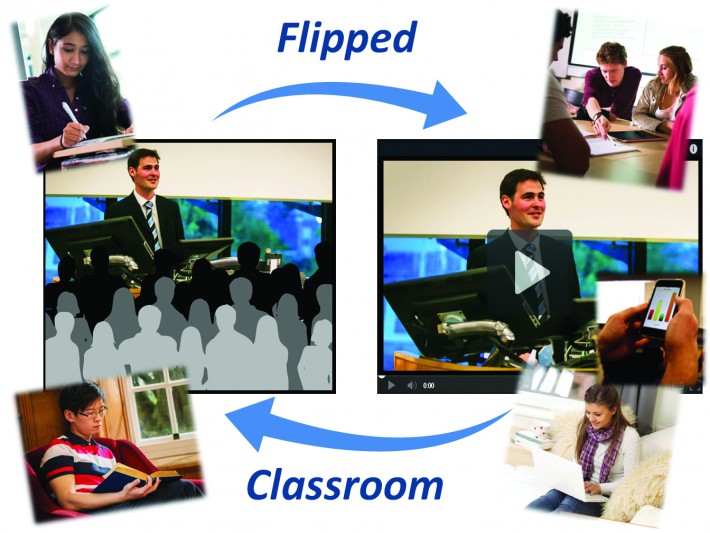Flipped Learning
Dr Damien Mansell from the University of Exeter explains how flipped classroom models of teaching can use online educational technology to engage learners.
 About the Author: Dr Damien Mansell, Senior Lecturer in Physical Geography at The University of Exeter, obtained his undergraduate degree in Geography B.Sc. at the University of Sheffield (2004-2007). He went on to research for a PhD at Swansea University entitled ‘Controls on the calving rate of North-West Svalbard glaciers’. After his PhD, Damien gained field experience by assisting on a research project in South East Greenland with the GLIMPSE Swansea University Glaciology Group. Damien moved to The University of Exeter in 2011 and is now Senior lecturer in Geography and Programme Director of Physcial Geography. Damien completed postgraduate certificate in Academic Practice in 2013 and achieved the status of Fellow of The Higher Education Academy.
About the Author: Dr Damien Mansell, Senior Lecturer in Physical Geography at The University of Exeter, obtained his undergraduate degree in Geography B.Sc. at the University of Sheffield (2004-2007). He went on to research for a PhD at Swansea University entitled ‘Controls on the calving rate of North-West Svalbard glaciers’. After his PhD, Damien gained field experience by assisting on a research project in South East Greenland with the GLIMPSE Swansea University Glaciology Group. Damien moved to The University of Exeter in 2011 and is now Senior lecturer in Geography and Programme Director of Physcial Geography. Damien completed postgraduate certificate in Academic Practice in 2013 and achieved the status of Fellow of The Higher Education Academy.
In Moore and Kearsley’s book Distance Education: A Systems View of Online Learning (1996) they state, ‘if there is any one secret to good teaching, it is summed up in the word activity.’ In higher education this is no longer a secret. Active or engaged-learning is a much discussed theme in current education conferences and literature, and in my ‘lectures’ at the University of Exeter I have been using an approach called flipped learning in order to increase active learning. As well as creating a fun and engaging learning environment, I have found that it has a number of additional advantages as well as some challenges.
Flipped learning (or flipped classroom teaching) involves swapping the contact time from the traditional lecture followed by reading or group work to using the contact time for discussion and feedback. The contact time is an interactive, engaging and two-way learning experience, rather than passive learning in the traditional model. Content is delivered through reading in advance, or watching a video, allowing the lecture time to be used to develop understanding through discussion and questions.

It is the way the contact time is used which is the largest benefit for the flipped classroom. Students use the time to construct knowledge and develop understanding rather than simply acquire knowledge. Knowledge construction means students develop understanding through feedback and an opportunity to ask questions. The replaced lecture can take a variety of formats such as a debate, further research, group work, question and answer session, test or sharing of work for peer assessment.
 Learning on Screen
Learning on Screen